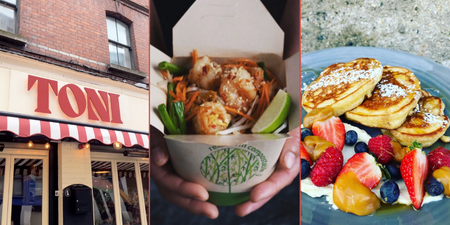We’ve all found ourselves doing a double take at a deli counter, as we’re presented with a roll, wrap or sandwich that for some reason costs as much as twice what it cost the day before.
You may think that this has something to do with the amount of chicken, or the volume of coleslaw, or perhaps the presence of more notions-laden ingredients such as jalapenos or chopped peppers.
On the contrary, however, the pricing is determined by a complex and closely guarded formula, distributed under oath to all deli workers before they take up their roll. Sorry, role.
We uncovered a copy of this secret documentation – and what we found inside, which we’ve relayed verbatim below, may shock you.
Assign an arbitrary value between 1 and 38 to the sandwich
This is based on the customer’s personal likeability, their clothes, and in some particularly archaic institutions, their gender.

Multiply this digit by the sum of all the digits in the customer’s phone number

Divide this by the total value of the ISEQ index at the exact moment in question
It’s very important that you’re precise about this, otherwise the entire integrity of the formula could be called into question.

Add half the airspeed velocity of an unladen swallow

Multiply this number by five and divide by seven, unless it’s a Tuesday or a Thursday, in which case it’s the other way round.

Keeping up? Good.
Estimate the number of stars in the picture below. If your shop is playing FM104, add one third of this number. If your shop is playing 98FM, add a quarter.
NB: If the shop is playing neither of these radio stations, you are not working in a real shop. Exit immediately.

If the wind is blowing in a northwesterly direction, add three to your total. If not, add 12.

Subtract the total number of times Vincent Browne interrupted a guest on the most recent edition of Tonight With Vincent Browne
If you’re not sure of this number, estimate between 110 and 180.

Take your total, and add up all the digits. You should end up with a two-digit figure.
For instance, if your number is 3,042,777, then 3+0+4+2+7+7+7 = 30.
This will be your cent total.

In front of that number, place a two, three, four or perhaps a five.
This will be your euro total, and the number you choose is entirely up to you based on your current mood.

Combine the two, and voila – you’ve got your price.
It might be €2.23 or it might be €5.67.
What’s important is that this number was reached using irrefutable modern science – you have done your duty.

Topics:
RELATED ARTICLES





MORE FROM Lovin Dublin
























MORE FROM Lovin Dublin



















